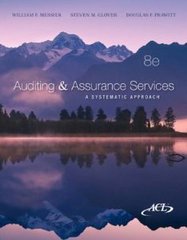Answered step by step
Verified Expert Solution
Question
1 Approved Answer
Hi, please help with the question below! Please follow the below instruction before you wrote the answer to this question: 1. Follow the format of
Hi, please help with the question below! Please follow the below instruction before you wrote the answer to this question:
1. Follow the format of the chart when you write down the answer
2. Provide the detailed solution of how you get these answers
3. Make sure you will answer all the questions when you answer them.



Step by Step Solution
There are 3 Steps involved in it
Step: 1

Get Instant Access to Expert-Tailored Solutions
See step-by-step solutions with expert insights and AI powered tools for academic success
Step: 2

Step: 3

Ace Your Homework with AI
Get the answers you need in no time with our AI-driven, step-by-step assistance
Get Started


